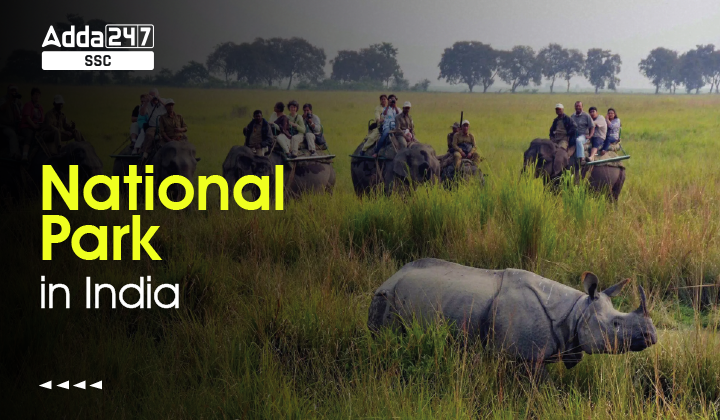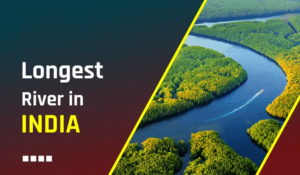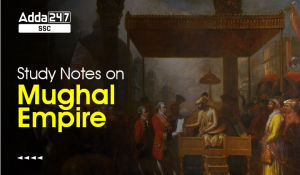India is a country blessed with a rich and diverse natural heritage. Our National Parks play a crucial role in preserving this invaluable treasure. These protected areas serve as sanctuaries for a wide range of animals, providing them with their natural habitats and the resources they need to thrive. We have a diverse range of flora and fauna. The Indo-himalayan ecozone contains about 6.2% of reptiles, 7.6% of mammals, 6.0% of flowering plants and 12.6% of bird species.
What is a National Park?
A national park is a designated area, whether within a sanctuary or not, that a state government can establish due to its ecological, faunal, floral, geomorphological, or zoological significance. The primary purpose of a national park is to protect, propagate, and develop wildlife and its environment. Unlike other protected areas, national parks have stricter regulations:
- No human activity is permitted inside a national park, except those explicitly allowed by the Chief Wildlife Warden of the state.
- These exceptions are governed by the conditions outlined in CHAPTER IV of the Wildlife Protection Act (WPA) 1972.
How many National Parks are in India?
There is a total of 106 national parks in India covering an area of 44,378 KM2, which is 1.35% of the geographical area of the country, according to the survey in December 2020. There are 75 other National Parks covering an area of 16,608 km2 proposed in the Protected Area Network Report. The network of parks will go up by 176 after the full implementation.
Largest National Parks in India
Here is the list of the top 10 largest national parks in India in descending order starting from the largest one. Candidates can refer to the area of the national parks as shown below.
- Hemis National Park [Area (km Square): 4,400.0]: Hemis National Park is a high altitude national park in Ladakh, India. Which is globally famous for its snow leopards.
- Desert National Park [Area (km Square): 3,162.0]: Desert National Park is located in the Rajasthan, near the towns of Jaisalmer and Barmer. It is an example of the ecosystem of the Thar Desert.
- Gangotri National Park [Area (km Square): 2,390.0]: Gangotri National Park is located in Uttarkashi district of Uttarakhand, India. Its habitat includes coniferous forests, alpine meadows and glaciers. The origin of river Ganga is located inside the Gangotri National Park.
- Namdapha National Park [Area (km Square): 1,985.2]: Namdapha National Park is located in Arunachal Pradesh. It is a biodiversity hotspot in the Eastern Himalayas.
- Khangchendzonga National Park [Area (km Square): 1,784.0]: Khangchendzonga National Park is located in the state of Sikkim in northern India. It includes a unique diversity of plains, valleys, lakes, glaciers and spectacular, snow-capped mountains covered with ancient forests.
- Guru Ghasidas (Sanjay) National Park [ Area (km Square): 1,440.7]: Guru Ghasidas National Park is also known as Sanjay National Park which is situated in Madhya Pradesh. It is declared as the 4th Tiger Reserve in Chhattisgarh and 53rd in India on 5th October 2021.
- Gir Forest National Park [Area (km Square): 1,412.0]: Kangchenjunga Gir Forest National Park and Wildlife Sanctuary, Talala Gir, Gujarat. It was established to protect the Asiatic lions that visit the Devalia Safari Park along with the leopards and antelopes.
- Sundarbans National Park [Area (km Square): 1,330.1]: Sundarbans National Park is a tiger reserve and biosphere reserve in West Bengal. It is a part of the Sundarbans on the Ganges Delta and is adjacent to the Sundarbans Reserve Forest in Bangladesh.
- Jim Corbett National Park [Area (km Square): 1,318.5]: Jim Corbett National Park is known for its Bengal Tigers which is located in Ramnagar, Uttarakhand.
- Indravati National Park [Area (km Square): 1,258.4]: Indravati National Park is one of the most famous wildlife parks of Chhattisgarh. It is one of the three Project Tiger sites in Chhattisgarh along with Udanti-Sitanadi and is home to one of the last remaining populations of endangered wild water buffalo.
National Parks in India – State Wise List
National Parks in India are Category II protected areas. The first national park in India was established in 1936, now known as Jim Corbett national park, Uttarakhand. The below table will provide a list of national parks in India with their year of establishment and the state to which they belong. Here is the complete state-wise list of National Parks in India.
Conservation Efforts
The establishment and maintenance of these national parks reflect India’s commitment to biodiversity conservation. These protected areas not only safeguard endangered species but also preserve entire ecosystems, contributing to climate regulation and environmental stability.
- Human-wildlife conflict: Encroachment of human activities into wildlife habitats leading to clashes and disruptions
- Habitat fragmentation: Fragmentation of habitats due to various developmental projects, posing a threat to ecosystem balance
- Poaching : Persistent problem of poaching, endangering iconic species like tigers, elephants, and rhinos and Illicit trade in wildlife and their derivatives depleting animal populations
- Climate change impacts : Changing weather patterns, rising temperatures, and shifting precipitation levels disrupting ecosystems
Addressing these challenges requires continued efforts from government bodies, conservation organizations, and local communities. The future of India’s national parks depends on sustainable management practices, increased public awareness, and a balance between conservation needs and human development.



 Top 10 Longest Rivers in India, Largest ...
Top 10 Longest Rivers in India, Largest ...
 Mughal Empire Notes For RRB NTPC Exam 20...
Mughal Empire Notes For RRB NTPC Exam 20...
 Longitude and Latitude of India - Defini...
Longitude and Latitude of India - Defini...









